Explore robust 4-20mA output pressure sensors ideal for industrial process control. Benefit from noise immunity, loop power, live zero diagnostics, and long-distance signal transmission for PLC & DCS integration.
Our range of pressure sensors with 4-20mA current loop outputs provides a robust and reliable solution for industrial process measurement and control applications. This industry-standard signal offers excellent noise immunity, ideal for long-distance transmission back to PLCs or DCS systems without signal degradation, while the ‘live zero’ feature enhances system diagnostics by clearly indicating loop faults. Explore sensors designed for demanding environments, often featuring convenient loop-powered operation for simplified installation.
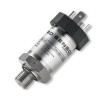 DMK457 Marine Approved Pressure Transmitter - Marine approved pressure transmitter with 4-20mA current loop output for shipbuilding with optional CuNiFe housing for sea-water compatibility
DMK457 Marine Approved Pressure Transmitter - Marine approved pressure transmitter with 4-20mA current loop output for shipbuilding with optional CuNiFe housing for sea-water compatibility TPSA Precision High Pressure Transducer - High pressure transducer for pressure testing applications with pressure ranges from 0...4 bar (60 psi) up to 0...1000 bar (15,000 psi) gauge with a measurement accuracy of 0.1%.
TPSA Precision High Pressure Transducer - High pressure transducer for pressure testing applications with pressure ranges from 0...4 bar (60 psi) up to 0...1000 bar (15,000 psi) gauge with a measurement accuracy of 0.1%. 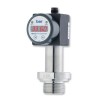 DS200P Sanitary Low Range Pressure Gauge, Switch and Sensor - All in one electronic switch, gauge and sensor designed specifically for use in the food, drink and biomedical industry for measuring process pressures.
DS200P Sanitary Low Range Pressure Gauge, Switch and Sensor - All in one electronic switch, gauge and sensor designed specifically for use in the food, drink and biomedical industry for measuring process pressures.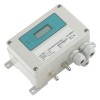 DPS Low Differential Pressure Transmitter - Ultra low differential pressure transmitter for HVAC applications with 4-20mA current loop or amplified voltage output signal in pressure ranges from 0.1 mb up to 1 bar differential.
DPS Low Differential Pressure Transmitter - Ultra low differential pressure transmitter for HVAC applications with 4-20mA current loop or amplified voltage output signal in pressure ranges from 0.1 mb up to 1 bar differential. 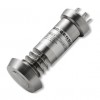 DMP331P Hygienic Flush Pressure Transmitter - Sanitary pressure sensor wth exposed diaphragm with no crevices for high temperatures up to 300 Degrees Celsius in ranges from 100mb up to 40 bar gauge or absolute
DMP331P Hygienic Flush Pressure Transmitter - Sanitary pressure sensor wth exposed diaphragm with no crevices for high temperatures up to 300 Degrees Celsius in ranges from 100mb up to 40 bar gauge or absolute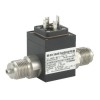 DMD331 Compact Differential Liquid Pressure Sensor - Wet wet differential pressure sensor with a high overpressure rating on both positive and negative pressure side for protection against damage.
DMD331 Compact Differential Liquid Pressure Sensor - Wet wet differential pressure sensor with a high overpressure rating on both positive and negative pressure side for protection against damage. DMK 331 Ceramic Diaphragm Industrial Pressure Transmitter - This pressure transmitter can be supplied with a PVDF process connector so that it can be used to measure the pressure of acids and other corrosive chemicals.
DMK 331 Ceramic Diaphragm Industrial Pressure Transmitter - This pressure transmitter can be supplied with a PVDF process connector so that it can be used to measure the pressure of acids and other corrosive chemicals.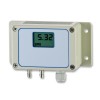 DPS200 HVAC Differential Pressure Transmitter - Differential air pressure sensor with a 10 volt or a 4-20mA output for building ventilation applications. Ranges from 0 to 6 mbar up to 0 to 1000 mbar.
DPS200 HVAC Differential Pressure Transmitter - Differential air pressure sensor with a 10 volt or a 4-20mA output for building ventilation applications. Ranges from 0 to 6 mbar up to 0 to 1000 mbar.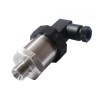 IMP Low Cost Pressure Sensor - Versatile low price pressure sensor with a wide selection of electrical and mechanical options for customisation.
IMP Low Cost Pressure Sensor - Versatile low price pressure sensor with a wide selection of electrical and mechanical options for customisation.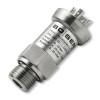 DMP331 Precision Pressure Transmitter - Stainless steel pressure transmitter with ranges from 100mbar up to 40 bar gauge or absolute. Special options for ATEX , SIL2 and compound ranges.
DMP331 Precision Pressure Transmitter - Stainless steel pressure transmitter with ranges from 100mbar up to 40 bar gauge or absolute. Special options for ATEX , SIL2 and compound ranges. DMP320 0.5 msec Fast Response Pressure Sensor - High frequency response pressure sensor with a better than 0.5 millisecond response time and internal digital signal conditioning that samples readings at a rate of 10 kilohertz.
DMP320 0.5 msec Fast Response Pressure Sensor - High frequency response pressure sensor with a better than 0.5 millisecond response time and internal digital signal conditioning that samples readings at a rate of 10 kilohertz. DPS300 User Switchable Pressure Range, Volts or Current Output Low DP Sensor - The DPS 300 is a low range HVAC differential pressure sensor. The lowest possible pressure range is 0...100 pascals. 2 or 3 switchable pressure ranges, plus volts or current output are included with most standard configurations.
DPS300 User Switchable Pressure Range, Volts or Current Output Low DP Sensor - The DPS 300 is a low range HVAC differential pressure sensor. The lowest possible pressure range is 0...100 pascals. 2 or 3 switchable pressure ranges, plus volts or current output are included with most standard configurations.
- 16 bar, 200°C steam pressure transmitter and gauge
- 10 bar g steam pressure transmitter, indicator and PNP switch
- Air classification system powder duct pressure transmitter with +/-15 kPa range and ATEX/IECEx IS cert
- Dirty water, sludge & sewerage tank level 400 mbar pressure sensor
- 100 Pa bi-directional range differential air pressure transmitter
- SIL2 approved 10 bar pressure transducer with 4 to 20 mA output
- 10,000 psi hydraulic pressure transmitter and panel readout
- Lube oil pressure sensor for use on ship engines to measure up to 10 bar
- ATEX approved negative 10 mbar vacuum pressure transmitter
- Atmospheric range for 4-20mA pressure sensor
- All-In-One transmitter for measuring steam temperature to 150°C and pressure to 4kg/cm² g
- 5000 bar Pressure Transmitter with AE HP fitting
Find out more about 4-20mA Output Pressure Sensors to determine which product options and capabilities will best meet your application requirements.
Pressure sensors incorporating a 4-20mA (milliamp) current loop output represent a cornerstone technology in industrial process measurement and control. This analogue signalling standard is specifically favoured for its inherent resilience against electrical noise interference, a common challenge in plant environments with heavy machinery and long cable runs. Unlike voltage signals which can attenuate significantly over distance, the 4-20mA current signal maintains its integrity, ensuring reliable pressure data transmission from the point of measurement back to central control systems, even over hundreds of meters.
A key advantage appreciated by process engineers and instrument technicians is the typical 2-wire configuration, often referred to as ‘loop-powered’. In this setup, the sensor draws its operating power directly from the same two wires that carry the output signal current. This simplifies wiring installation and reduces costs compared to sensors requiring separate power connections, making integration into existing plant infrastructure more straightforward. The required DC supply voltage (commonly 24Vdc) must simply be sufficient to drive the current through the total loop resistance, including wiring and receiver input resistance.
The ‘live zero’ characteristic of the 4-20mA signal, where 4mA corresponds to the sensor’s zero pressure reading (or the lower range value), provides a vital diagnostic function. A current reading of 0mA indicates a fault condition, such as a broken wire or sensor failure, rather than a valid zero pressure reading. This fail-safe indication is critical for maintaining process safety and operational awareness, allowing control systems like PLCs or DCS to immediately flag loop integrity issues.
These sensors interface directly with a wide array of standard process instrumentation. Inputs on Programmable Logic Controllers (PLCs), Distributed Control Systems (DCS), data loggers, chart recorders, and digital panel meters are commonly designed to accept this 4-20mA input directly. Within the control system, the 4mA to 20mA range is easily scaled to correspond to the sensor’s specific calibrated pressure range (e.g., 0 to 100 bar, -1 to 5 bar), translating the raw current signal into meaningful engineering units for monitoring, control logic, and historical trending.
Applications are diverse, ranging from monitoring hydraulic system pressures in manufacturing facilities and measuring hydrostatic level in tall chemical storage tanks to controlling fluid flow rates in pipelines within petrochemical refineries or monitoring steam pressure in power generation turbines. The robustness of the 4-20mA signal makes these pressure sensors suitable for demanding environments, including installations requiring intrinsic safety barriers for operation within potentially hazardous areas, where limiting electrical energy is paramount. Choosing the correct wetted materials and process connection type remains crucial to ensure compatibility with the specific fluid or gas being measured and the operational pressures involved.
Product Help
Checklist for 4 to 20 milliamps output pressure transmitter requirements
Define your 4-20mA output signal pressure transmitter requirements using this checklist:
- Pressure range?
- Output signal? 4-20 milliamps
- Accuracy?
- Electrical connection?
- Process connection?
- Process media type?
- Temperature range?
